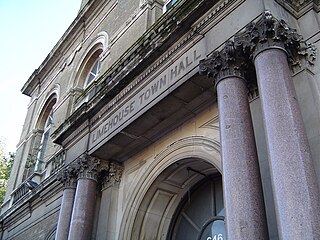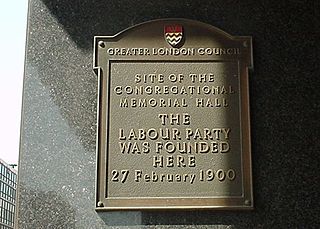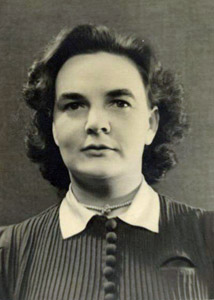
Limehouse is a district in the London Borough of Tower Hamlets in East London. It is 3.9 miles (6.3 km) east of Charing Cross, on the northern bank of the River Thames. Its proximity to the river has given it a strong maritime character, which it retains through its riverside public houses and steps, such as The Grapes and Limehouse Stairs. It is part of the traditional county of Middlesex. It became part of the ceremonial County of London following the passing of the Local Government Act 1888, and then part of Greater London in 1965.

The London Borough of Tower Hamlets is a borough of London, England. Situated on the north bank of the River Thames and immediately east of the City of London, the borough spans much of the traditional East End of London and includes much of the regenerated London Docklands area. The 2019 mid-year population for the borough is estimated at 324,745.

Banner-making is the ancient art or craft of sewing banners. Techniques used include applique, embroidery, fabric painting, patchwork and others.

Limehouse Town Hall is a former town hall building on Commercial Road, in Limehouse, in the London Borough of Tower Hamlets. It is a Grade II listed building.

Limehouse Basin is a body of water 2 miles east of London Bridge that is also a navigable link between the River Thames and two of London's canals. First dug in 1820 as the eastern terminus of the new Regent's Canal, its wet area was less than 5 acres originally, but it was gradually enlarged in the Victorian era, reaching a maximum of double that size, when it was given its characteristic oblique entrance lock, big enough to admit 2,000-ton ships.

The National Waterways Museum (NWM) is in Ellesmere Port, Cheshire, England, at the northern end of the Shropshire Union Canal where it meets the Manchester Ship Canal. The NWM's collections and archives focus on the Britain's navigable inland waterways, including its rivers and canals, and include canal boats, traditional clothing, painted canal decorative ware and tools. It is one of several museums and attractions operated by the Canal & River Trust, the successor to The Waterways Trust.

Astley is a village in the Metropolitan Borough of Wigan, Greater Manchester, England. Within the boundaries of the historic county of Lancashire, it is crossed by the Bridgewater Canal and the A580 East Lancashire Road. Continuous with Tyldesley, it is between Wigan and Manchester, both 8 miles (13 km) away. Astley Mosley Common ward had a population of 11,270 at the 2011 Census.

Bishopsgate Library, now known as Bishopgate Institute's Special Collections and Archives is an independent, charity-funded library located within the Bishopsgate Institute in the City of London.

A hydraulic power network is a system of interconnected pipes carrying pressurized liquid used to transmit mechanical power from a power source, like a pump, to hydraulic equipment like lifts or motors. The system is analogous to an electrical grid transmitting power from a generating station to end-users. Only a few hydraulic power transmission networks are still in use; modern hydraulic equipment has a pump built into the machine. In the late 19th century, a hydraulic network might have been used in a factory, with a central steam engine or water turbine driving a pump and a system of high-pressure pipes transmitting power to various machines.

LGBT+ Labour, the Labour Campaign for Lesbian, Gay, Bisexual and Transgender Rights, is a socialist society related to the Labour Party in the United Kingdom. Originally called the Gay Labour Group, the purpose of this organisation is to campaign within the Labour Party and wider Labour movement to promote the rights of lesbian, gay, bisexual and transgender (LGBT) people, and to encourage members of the LGBT community to support the Labour Party.

The Working Class Movement Library (WCML) is a collection of English language books, periodicals, pamphlets, archives and artefacts, relating to the development of the political and cultural institutions of the working class created by the Industrial Revolution, in Salford, Greater Manchester, England.

Manchester's Hydraulic Power system was a public hydraulic power network supplying energy across the city of Manchester via a system of high-pressure water pipes from three pumping stations from 1894 until 1972. The system, which provided a cleaner and more compact alternative to steam engines, was used to power workshop machinery, lifts, cranes and a large number of cotton baling presses in warehouses as it was particularly useful for processes that required intermittent power. It was used to wind Manchester Town Hall clock, pump the organ at Manchester Cathedral and raise the safety curtain at Manchester Opera House in Quay Street. A large number of the lifts and baling presses that used the system had hydraulic packings manufactured by John Talent and Co.Ltd. who had a factory at Ashworth Street, just off the Bury New Rd. close to the Salford boundary.

The Mechanics' Institute, located at 103 Princess Street, Manchester, England, is notable as the building in which three significant British institutions were founded: the Trades Union Congress (TUC), the Co-operative Insurance Society (CIS) and the University of Manchester Institute of Science and Technology (UMIST). In the 1960s it was occupied by the Manchester College of Commerce. It has been a Grade II* listed building since 10 May 1972.

The Trades Union Congress (TUC) is a national trade union centre, a federation of trade unions that collectively represent most unionised workers in England and Wales. There are 48 affiliated unions with a total of about 5.5 million members. Paul Nowak is the TUC's current General Secretary, serving from January 2023.

The Labour Representation Committee (LRC) was a pressure group founded in 1900 as an alliance of socialist organisations and trade unions, aimed at increasing representation for labour interests in the Parliament of the United Kingdom. The Labour Party traces its origin to the LRC's foundation.
Lesbians Against Pit Closures (LAPC) were an alliance of lesbian women who came together to support the National Union of Mineworkers and various mining communities during the UK miners' strike of 1984–1985. They were formed after a schism in the Lesbians and Gays Support the Miners (LGSM) movement, in November 1984. Members of the organisation were involved in picket line protests against the delivery of coal to the factories by strikebreakers.

Ruth Frow was a peace activist and historian of the labour movement. She co-founded the Working Class Movement Library in Salford, a collection of material associated with labour and working class history.

The following is a timeline of the history of the city of Manchester in north west England.
Betty Tebbs was an English activist for women's rights and a peace campaigner. She was described by the People's History Museum in Manchester as "a radical hero who worked tirelessly and with great humility to campaign for equal rights, workers' rights and peace her whole life".
This is an overview of Women's Suffrage activism and local politics as experienced in Leigh, Lancashire between 1900 and 1914.

























